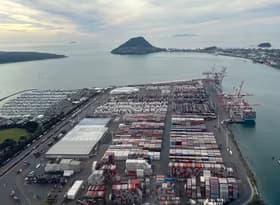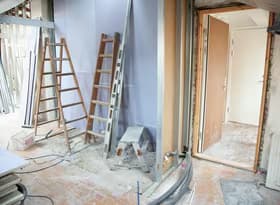Examining homelessness trends across New Zealand

Homelessness is a clear challenge for some people in New Zealand. Although homelessness numbers are small, on a relative basis, housing outcomes for nearly 112,000 people are still far too precarious to be ignored. Homelessness comes in different forms, and with different patterns of need across New Zealand.
Comprehensive data on recent homeless trends is limited, although the Ministry of Housing and Urban Development does produce some insights quarterly, with a lag. As they note, “The most robust estimates of homelessness are available from Census every five years,” and this analysis details these homeless estimates.
First published for Infometrics clients, and now opened to the public, this analysis attempts to unpack some of the trends in homelessness across New Zealand, to give decision makers and communities a more accessible view of the trends in severe housing deprivation that are present locally.
The different forms of homelessness – or severe housing deprivation
Homelessness is generally seen as when someone doesn’t have safe and secure housing, and when someone’s living situation means they don’t have access to minimally adequate housing. New Zealand researchers suggest that minimally adequate housing access must have two of the three “core dimensions of housing adequacy – habitability, privacy and control, and security of tenure.”
Commonly, homelessness is seen by the public as someone living “on the streets”, and it can be conflated with public displays of rough sleeping and begging on the street. However, homelessness comes in many forms, and it is broader than just these public perceptions. Researchers have termed “severe housing deprivation” as more all-encompassing of the various conditions that should fall under this category.
Homelessness estimates (hereafter “severe housing deprivation estimates”) are broken down into various components.
- Those without shelter – including roofless or rough sleepers, as well as those in improvised dwellings like a garage, shack, or car. Nationally, this is the smallest group of people, with 4% of people counted as severely housing deprived being in this category.
- Those in temporary accommodation – including emergency and transitional housing for homeless people, but not including those “overstaying” in hospital, at campgrounds, boarding houses/motels privately, or marae, because the reason of use of these types of housing cannot be determined. Nationally, this is the second-smallest group of people, with 12% of people counted as severely housing deprived being in this category.
- Those sharing someone else’s private dwelling – where the person has no other address, the dwelling is severely overcrowded, and they aren’t linked to the family or reference unit of the dwelling – so someone couch surfing at a friend’s house is included here. Nationally, this is the second-largest group of people, with 22% of people counted as severely housing deprived being in this category.
- Those in uninhabitable housing - where the dwelling has inadequate or absent utility services, lacking at least one of the following six basic amenities:
- drinkable tap water
- electricity
- cooking facilities
- a kitchen sink
- a bath or shower
- a toilet
Nationally, this is the largest group of people, with 62% of people counted as severely housing deprived being in this category.
A few caveats around homelessness figures
Determining the number of people in precarious situations like homelessness is a difficult task, as information about this group isn’t always fully and readily available. Stats NZ notes that its severely housing deprived figures are likely to be an undercount. That said, they’re still the best source of information to try and understand the trends and nuance around severe housing deprivation, and they often provide better estimates than are available around the rest of the world.
Those counted as severely housing deprived are determined primarily from Census information. Simplistically, a person is counted as severely housing deprived if the person is recorded (either via the Census form, or more likely through administrative data from government agencies) as:
- living in a non-habitable home or without a fixed address, or
- living in emergency or transitional housing (outside of the owner-operators of those facilities), or
- living in a crowded house and not part of the family/reference dwelling unit.
There are various other inclusions and exclusions that make technical sense. For example, the number of people living in Women’s Refuge accommodation is not counted in Census data, but it is provided directly by the National Collective of Independent Women’s Refuges and added to national estimates. Figures aren’t official data, and as such aren’t added to sub-national figures, also ensuring security of location for Women’s Refuges sites.
Some people are known, but their housing status can’t be determined. For example, a person is counted in the Census, but the type of dwelling they live in – or not – isn’t detailed, or their relationship within a crowded house isn’t known. These people are noted as “cannot be determined” for homelessness figures.
Analysis and data measurement of severe housing deprivation have changed considerably over time. Census 2018 and 2023 data are the most comparable sets of data, as estimates for 2001, 2006, and 2013 do not include uninhabitable housing, because those figures weren’t collected.
More details about the various approaches and caveats around severe housing deprivation estimates are outlined by Stats NZ in its methodology note for 2023.
Hotspots of severe housing deprivation across New Zealand
Nationally, 2.3% of the stated population, or around 112,000 people, were counted as severely housing deprived in 2023. This severe housing deprivation rate was up from 2.1% in the 2018 estimates.
However, severe housing deprivation rates differ considerably across the country. Rates range between 5.8% of the population for Buller District, down to just 0.7% in Selwyn District, as Chart 1 shows.
Buller District’s 5.8% severe housing deprivation rate is the highest in the country, reflecting challenging outcomes for around 600 local residents. Tairāwhiti/Gisborne has the second-highest rate, with 5.4% (around 2,750 people) counted as severely housing deprived. Kawerau has the third-highest rate, at 5.3%, followed by the Far North (4.6%) then Opotiki District.
Although at first glance some of the areas with higher housing deprivation align with other indicators, including a mix of areas with lower incomes, higher housing costs, or higher general social deprivation, those trends don’t fully hold true. For example, Grey District, neighbouring highest-rated Buller, has a much lower severe housing deprivation rate of 1.9%.
Areas with the lowest rates of severe housing deprivation also have mixed characteristics too. Selwyn District has the lowest severe housing deprivation rate in the country, with 0.7% (540 people), followed by Waipa District (0.9%), then Upper Hutt City (1.0%).
Infometrics estimates show that, on average, provincial economies had a lower severe housing deprivation rate on average, at 2.0% in 2023. Metro areas had a slightly higher severe housing deprivation rate, at 2.4% on average, but it was rural areas with the highest severe housing deprivation rates, at 2.6%.
Drivers of severe housing deprivation differ across areas
Digging into the detail, different areas have different drivers of higher severe housing deprivation. Although Buller District had high homelessness rates across all component indicators, the key driver of the District’s higher homelessness rate was uninhabitable housing. In 2023, 4.1% of stated people in Buller were living in housing that didn’t have all the basic amenities. Gisborne and Kawerau also had higher uninhabitable housing rates, alongside Ruapehu District, the Far North, and Rangitikei District. Generally, not having access to safe drinking water was a key reason for lacking basic amenities, although not having a fridge or electricity supply were also higher than might be expected.
Sleeping on someone’s couch, categorically known as “sharing someone else’s private dwelling”, is a more invisible form of housing deprivation. Kawerau District had the highest rate of staying at someone else’s house, with 1.4% of people in this position in 2023. Gisborne, Opotiki, Wairoa, and the Chatham Islands all had higher rates of staying at someone else’s house too.
For what many might think of as the narrow definition of “homelessness” and sleeping rough or on the streets, Buller and the Far North both had high rates of people living completely without shelter, at 0.8% and 0.7% respectively. Westland District was third highest, with 0.6%, followed by Opotiki and then the Chatham Islands (although at these low levels, the Island has only 1-3 people in this situation).
Temporary housing is the area where severe housing deprivation trends diverge the most. For the other components, trends have been similar among several high-needs communities. But looking at higher rates of temporary accommodation shines a light on other areas. Mackenzie District has the highest rate of temporary accommodation use in the country, with 1.5% of people living in temporary accommodation. Kaikōura is second, with 0.9%, followed by Westland (0.8%), Queenstown-Lakes (0.8%), and Nelson (0.7%). Notably, all these areas with the highest rates of temporary accommodation use are tourism hotspots. Housing pressures in tourism areas are clear, but they result in different types of severe housing deprivation outcomes.
It’s also possible that wild weather pushed some figures higher, although this factor wouldn’t explain all the underlying trends. Gisborne and Buller had some of the larger increases in severe housing deprivation between 2018 and 2023, and both areas saw intense wild weather between 2018 and 2023 – particularly for Gisborne around the time of the 2023 Census, with Cyclone Gabrielle. Ōpōtiki, Wairoa, and the Far North similarly had cyclone impacts. But Hastings District, which also saw substantial housing impacts from the Cyclone, actually recorded the largest fall in severe housing deprivation rates between 2018 and 2023, suggesting wild weather didn’t drive a change in results during this period.
Different pressures, not as in your face
Homelessness, or severe housing deprivation, comes in various forms – some more obvious than others. Although some of the trends across New Zealand surrounding severe housing deprivation align with other indicators, not all outcomes are as easily explained. Tourism-related areas have different housing-related pressures that produce different outcomes from areas with lower socioeconomic outcomes.
The solutions to homelessness are also varied. Support may not be as simple as “just getting someone a house”, with nearly 69,000 people currently living in a house, but without basic amenities. Other forms of severe housing deprivation are more hidden, like people sharing someone else’s house. Although severe housing deprivation estimates in New Zealand are likely to undercount the true scale of the challenge, current data provides a clear and comprehensive enough picture of areas to be addressed.
- Homeless, Penner, Poverty by Alexander Fox. Copyright 2020. Licensed from Pixabay.
 Brad Olsen
Brad Olsen




